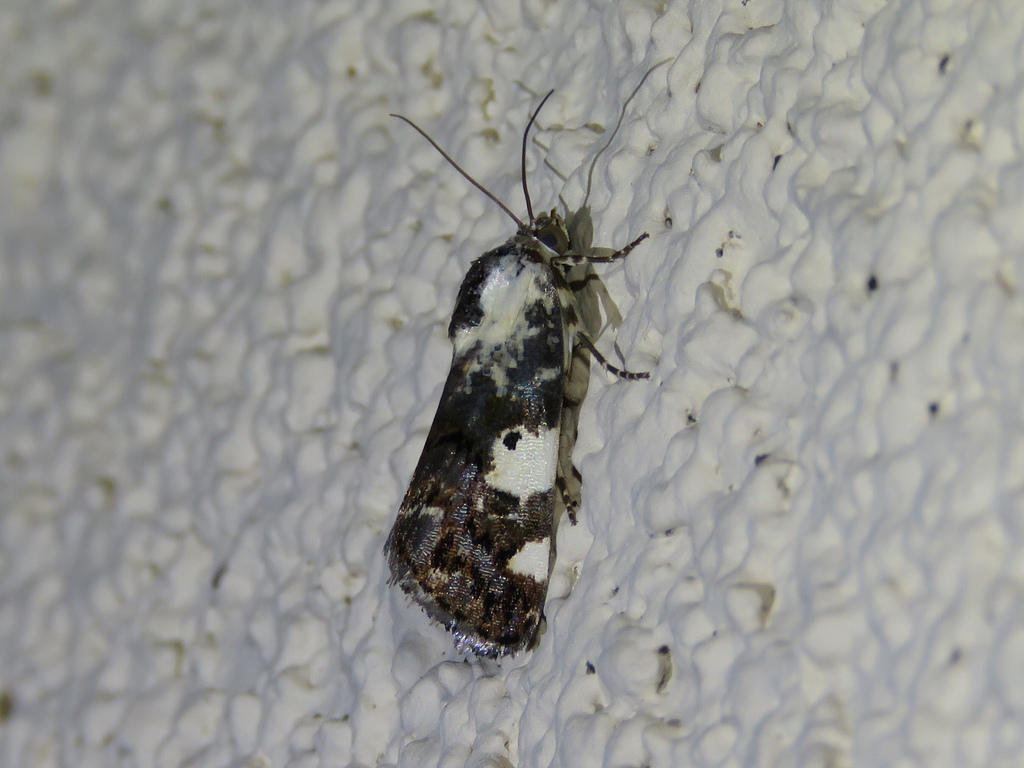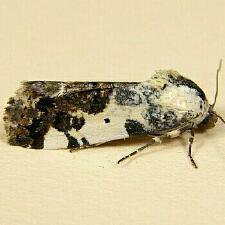Map Snapshot














41 Records
Seasonality Snapshot
Use of media featured on Maryland Biodiversity Project is only permitted with express permission of the photographer.
A female Exposed Bird-dropping Moth in Cecil Co., Maryland (8/21/2017).
View Record Details
Media by
Shannon Schade.
An Exposed Bird-dropping Moth in Cecil Co., Maryland (9/12/2016). Verified by Roger Downer/BAMONA.
View Record Details
Media by
Shannon Schade.
An Exposed Bird-dropping Moth in Frederick Co., Maryland (8/6/2016). Verified by Roger Downer/BAMONA.
View Record Details
Media by
Mark Etheridge.
A female Exposed Bird-dropping Moth in Harford Co., Maryland (7/1/2013).
View Record Details
Media by
Mike Burchett.
Exposed Bird-dropping Moth in Prince George's Co., Maryland (8/15/2020). Verified by Tom Walters.
View Record Details
Media by
Barbara Thurlow.
An Exposed Bird-dropping Moth in Frederick Co., Maryland (8/18/2017).
View Record Details
Media by
Mark Etheridge.
An Exposed Bird-dropping Moth in Frederick Co., Maryland (8/6/2016). Verified by Roger Downer/BAMONA.
View Record Details
Media by
Mark Etheridge.
An Exposed Bird-dropping Moth in Baltimore City, Maryland (7/15/2015). Determined by Kyhl Austin/BugGuide.
View Record Details
Media by
Thomas Wilson.
An Exposed Bird-dropping Moth in Frederick Co., Maryland (7/22/2016). Verified by Roger Downer/BAMONA.
View Record Details
Media by
Mark Etheridge.
An Exposed Bird-dropping Moth in Harford Co., Maryland (7/23/2017).
View Record Details
Media by
Josh Emm.
An Exposed Bird-dropping Moth in Harford Co., Maryland (8/17/2019).
View Record Details
Media by
Dave Webb.
Exposed Bird-dropping Moth in Caroline Co., Maryland (7/4/2017).
View Record Details
Media by
Wayne Longbottom.
An Exposed Bird-dropping Moth in Harford Co., Maryland (8/26/2020).
View Record Details
Media by
Dave Webb.
Exposed Bird-dropping Moth in Washington Co., Maryland (7/22/2022). (c) Mark Etheridge, some rights reserved (CC BY-NC).
View Record Details
Media by
Mark Etheridge.
An Exposed Bird-dropping Moth in Harford Co., Maryland (7/1/2013).
View Record Details
Media by
Mike Burchett.
An Exposed Bird-dropping Moth in Cecil Co., Maryland (8/5/2021).
View Record Details
Media by
Dave Webb.
An Exposed Bird-dropping Moth in Kent Co., Maryland (8/16/2021).
View Record Details
Media by
Dave Webb.
Exposed Bird-dropping Moth in Frederick Co., Maryland (7/31/2021). (c) Wendy R Fredericks, some rights reserved (CC BY-NC).
View Record Details
Media by
Wendy R. Fredericks.
An Exposed Bird-dropping Moth in Prince George's Co., Maryland (6/5/2010).
View Record Details
Media by
Bob Patterson.
An Exposed Bird-dropping Moth in Calvert Co., Maryland (6/29/2006).
View Record Details
Media by
Arlene Ripley.
An Exposed Bird-dropping Moth in Calvert Co., Maryland (6/29/2006).
View Record Details
Media by
Arlene Ripley.
A Exposed Bird-dropping Moth in Howard Co., Maryland (9/2/2005).
View Record Details
Media by
Larry Line.
A Exposed Bird-dropping Moth in Howard Co., Maryland (9/2/2005).
View Record Details
Media by
Larry Line.
An Exposed Bird-dropping Moth in Howard Co., Maryland (9/2/2005).
View Record Details
Media by
Larry Line.
An Exposed Bird-dropping Moth collected in Frederick Co., Maryland (5/30/2003).
View Record Details
Media by
Mark Etheridge.
Source: Wikipedia
| Tarache aprica | |
|---|---|

| |
| Male | |

| |
| Female | |
| Scientific classification | |
| Domain: | Eukaryota |
| Kingdom: | Animalia |
| Phylum: | Arthropoda |
| Class: | Insecta |
| Order: | Lepidoptera |
| Superfamily: | Noctuoidea |
| Family: | Noctuidae |
| Genus: | Tarache |
| Species: | T. aprica
|
| Binomial name | |
| Tarache aprica (Hübner, [1808])
| |
| Synonyms | |
| |
Tarache aprica, the exposed bird dropping moth, is a moth of the family Noctuidae. The species was first described by Jacob Hübner in 1808.[1] It is found in North America from Ontario and Quebec to Florida, west to Arizona, north to Kansas and Iowa. There are some records from Great Britain, but this probably relates to imports.

The habitat consists of gardens, fields and open areas. The wingspan is 15–29 mm. Adults are on wing from March to September in the south. They have a reduced season in the north.
The larvae feed on Alcea rosea.
References
[edit]- ^ Savela, Markku, ed. (June 9, 2020). "Tarache aprica (Hübner, [1808])". Lepidoptera and Some Other Life Forms. Retrieved September 21, 2020.
External links
[edit]- "931343.00 – 9136 – Tarache aprica – Exposed Bird-dropping Moth – (Hübner, [1808])". North American Moth Photographers Group. Mississippi State University. Retrieved September 21, 2020.
- McLeod, Robin (May 4, 2017). "Species Tarache aprica - Exposed Bird Dropping Moth - Hodges#9136". BugGuide. Retrieved September 21, 2020.
























